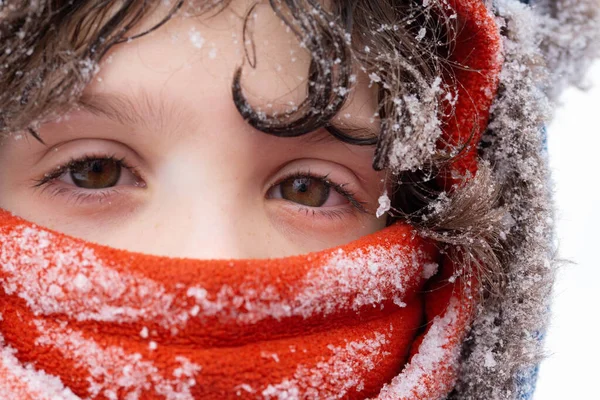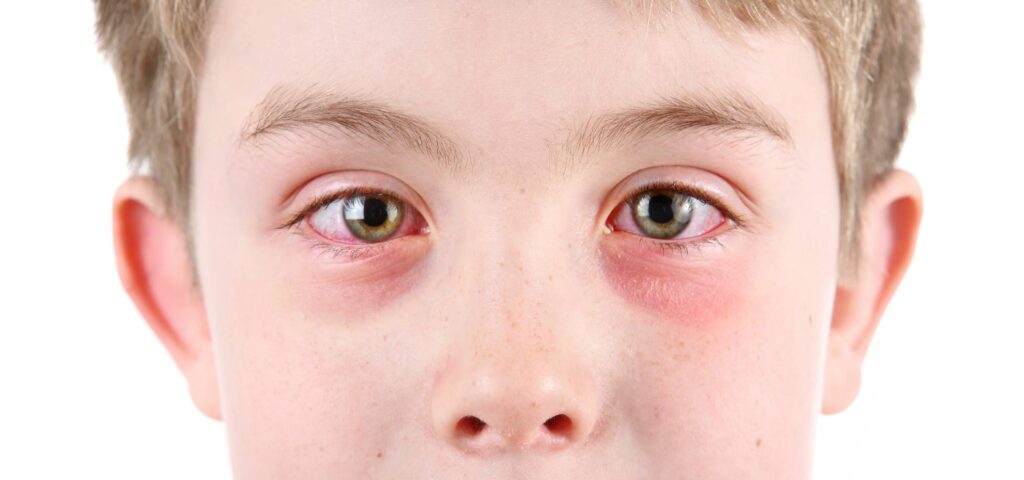We diligently lather our kids in sunscreen, cover their heads with wide-brimmed hats on scorching sunny days, bundle them up in warm layers during frosty winter mornings, and invest in the best shoes to support their growing feet. But there’s one area we often overlook—their eyes.

While we’re quick to protect their skin and bodies from the elements, children’s eyes need just as much care and attention. Young eyes are particularly sensitive and vulnerable to environmental factors, and each season presents its own challenges. The bright UV rays of summer, the dry, cold air and intense glares of winter, and the allergen-filled breeze of spring all have different impacts on their eye health.
Seasonal eye care means adjusting eye protection and care routines to meet these unique, shifting conditions. Just as changing weather affects our skin, respiratory health, and overall comfort, it also impacts our eyes in specific ways. For children, whose eyes are still developing, adapting eye care with the seasons is essential to safeguard their health and comfort, now and in the future.
The Importance of Seasonal Eyecare for Kids
Seasonal eye care for kids is crucial because each time of year brings different environmental factors that can impact young, sensitive eyes. Children’s eyes are still developing, making them more susceptible to harm from UV rays, allergens, and dry air than adult eyes. Unlike mature eyes, the lenses in kids’ eyes are clearer, allowing more light—and potentially harmful UV rays—to reach the retina. This heightened exposure, if left unprotected, can increase the risk of long-term eye issues, such as cataracts and macular degeneration.
During summer, high UV exposure, intense sunlight, and hot, dry conditions can cause discomfort, dryness, and even potential sun damage. Winter, on the other hand, presents its own set of risks. Cold air and indoor heating create dry conditions that can irritate young eyes, while snow and ice reflect UV rays, increasing exposure and risk, even on cloudy days. In spring and fall, allergens like pollen, ragweed, and dust are more prevalent, leading to irritation, redness, and itchiness. Without seasonal adjustments to eye care, children are more likely to experience discomfort and even potential damage from these factors.
Seasonal eye care helps reduce these risks by adapting to the specific challenges of each season, ensuring children’s eyes are comfortable, healthy, and protected. Beyond these immediate benefits, adapting eye care habits with the seasons teaches children the importance of caring for their vision all year long. Establishing these practices early on can foster a lifelong awareness of eye health, encouraging them to take proactive steps as they grow. Protecting their eyes from the elements now means they can enjoy the outdoors comfortably and safely, while supporting their vision health for years to come.
Sunny Season

The sunny season, with its long, bright days and high UV index, poses unique challenges to children’s eye health. During summer, kids naturally spend more time outdoors, whether at the beach, in the park, or simply playing in the backyard. While this outdoor time is great for their physical health and development, it also means that their sensitive eyes are exposed to much higher levels of UV radiation. Young eyes are particularly vulnerable because their lenses are clearer than adults’, allowing more UV rays to penetrate deep into the eye, which can increase the risk of damage to the retina and other parts of the eye over time.

UV index levels often reach their peak during the summer, especially in regions closer to the equator. In sunny areas, the UV index regularly reaches levels of 8-10, considered “very high,” and even exceeds 11 on extreme days, indicating an “extreme” risk. This level of exposure means that unprotected skin and eyes can be harmed in just minutes under direct sunlight. The strength of UV radiation is typically highest between 10 a.m. and 4 p.m., and reflective surfaces like water and sand amplify exposure, making it especially challenging for kids at the beach or pool to avoid sun damage.
In addition to UV exposure, summer often brings dry, warm air that can lead to eye dryness and irritation, especially when kids move between air-conditioned spaces and the heat outside. Bright light and glare from reflective surfaces can also cause discomfort and make it hard for kids to keep their eyes fully open. Squinting to shield their eyes from intense sunlight can lead to eye strain, particularly for those without proper eye protection.
Tips to Protect Kids' Eyes in the Sunny Season
- Quality sunglasses are the most effective tool to shield your child’s eyes from harmful UV rays. Choose sunglasses that provide 100% UVA and UVB protection to block the damaging rays that can penetrate young eyes and lead to long-term risks like cataracts and retinal damage. Sunglasses should have a wraparound design to prevent light from entering from the sides and should be impact-resistant for safety during active play. This single step is the foundation of sun protection for young eyes and is essential to safeguarding their long-term vision.
An unbreakable sunglasses for safety during active play.
- Pairing sunglasses with a wide-brimmed hat adds an extra layer of protection by shading the face and reducing direct sunlight exposure. This combination is especially effective for children who spend extended time outdoors, as it minimizes glare and reduces overall UV exposure to their eyes and face.

- The sun’s rays are strongest between 10 a.m. and 4 p.m. If possible, plan outdoor activities earlier in the morning or later in the afternoon to avoid peak UV hours. This helps reduce the intensity of sunlight they’re exposed to and complements the protection from their sunglasses and hat.
- Frequent shade breaks help reduce continuous exposure to intense sunlight. Whether they’re at the beach or in the park, encourage your child to take breaks in shaded areas to give their eyes a rest from the bright light.
- Proper hydration helps keep the eyes moist and comfortable, especially in dry, hot weather. Encourage kids to drink water throughout the day to support overall eye health, reduce dryness, and keep them comfortable while outdoors.
Winter Season

While the sun’s warmth may seem less intense, UV rays remain a significant concern—even on cold, dark days. These rays penetrate through clouds, meaning they’re present even when the sun isn’t visible. With the added reflection of light off snow and ice, UV exposure can actually increase during winter. Snow and ice can reflect up to 80% of these rays, nearly doubling UV exposure and creating a bright, blinding glare. This intense reflection of sunlight, often called "winter glare," makes it difficult for kids to see comfortably, strains their eyes, and can cause squinting, headaches, and fatigue. Even on cloudy days, UV rays penetrate through clouds, meaning children’s eyes are at risk of UV exposure throughout winter.
In addition to UV exposure, the winter season also brings challenges with eye dryness. Cold outdoor air combined with dry indoor heating can cause discomfort and lead to dry, itchy eyes. Moving back and forth between these extreme environments can further irritate young eyes. Children who enjoy winter sports like skiing, snowboarding, and sledding are particularly vulnerable to winter glare, UV exposure, and cold winds, which all contribute to dryness and eye strain.
Tips to Protect Kids' Eyes in the Winter
- In winter, polarized goggles or winter-specific sunglasses are particularly effective for reducing glare from snow and ice. Polarized lenses cut down on the intense reflections that create winter glare, making it easier for kids to see clearly without squinting. Goggles are ideal for activities like skiing, snowboarding, or sledding, as they provide full coverage and wind protection, shielding eyes from both UV rays and cold air.
- Tinted or amber lenses can increase contrast, which is especially helpful in snowy, overcast conditions when visibility may be reduced. These lens colors help enhance clarity, making it easier for kids to navigate in low-light winter conditions while still offering UV protection.
- Encourage children to face away from bright reflective surfaces or shield their eyes with their hand when moving through areas with intense snow glare. This simple habit can help reduce the immediate strain on their eyes from direct reflections.
- A face shield, scarf, or balaclava can provide warmth and reduce direct exposure to cold wind, which can dry out the eyes and cause irritation. These accessories also help keep goggles or sunglasses snug, preventing them from fogging up or letting in cold air from the sides.
Extra Tips
Allergy Season

During spring, children’s eyes are vulnerable to allergens like pollen and dust, which can cause itching, redness, and tearing. Wraparound sunglasses help shield their eyes from allergens while providing UV protection. Limit outdoor activities when pollen counts are high, especially on windy days, and encourage frequent hand-washing to reduce allergen exposure. After outdoor play, have them shower and change clothes to remove any lingering pollen. Keeping indoor air clean with an air purifier and closed windows also provides relief. For added comfort, a cold compress or preservative-free eye drops can help soothe irritated eyes.
Regular Eye Exams
Regular eye exams are essential to detect early signs of irritation or vision issues, especially during seasons with high allergens or UV exposure. The WHO recommends screenings at birth, within the first year, before school, and annually afterward. We also advise a yearly checkup before the school year to catch any vision problems that could impact learning. Eye exams allow doctors to assess eye health, monitor development, and offer seasonal care recommendations, supporting children’s overall vision health both in and out of the classroom.
Good Eye Hygiene Habits
Teaching children proper eye hygiene is crucial, particularly in seasons with high allergen exposure. Encourage them to wash their hands before touching their eyes, which reduces the risk of transferring dirt, bacteria, and allergens that can lead to irritation or infection. Remind them not to rub their eyes, especially if they feel itchy, as this can worsen symptoms. Building these habits early on helps protect their eyes from common infections and keeps their vision comfortable year-round.
Hydration and Nutrient-Rich Diet

Proper hydration and a nutrient-rich diet support children’s eye health by keeping their eyes moist and reducing dryness, especially in dry or heated environments. Drinking water regularly helps maintain tear production and prevents eye strain. A diet rich in vitamins A, C, and E, along with omega-3s, strengthens eye health. Foods like carrots, citrus fruits, leafy greens, and nuts provide essential nutrients, supporting clear, healthy vision for years to come.
Limiting Screen Time

Reducing screen time is key to avoiding digital eye strain, which can cause fatigue, dryness, and headaches. Encourage regular breaks with the 20-20-20 rule: every 20 minutes, look at something 20 feet away for at least 20 seconds. This habit helps relieve eye strain, allowing kids to use screens comfortably without overworking their eyes.





Leave a comment (all fields required)